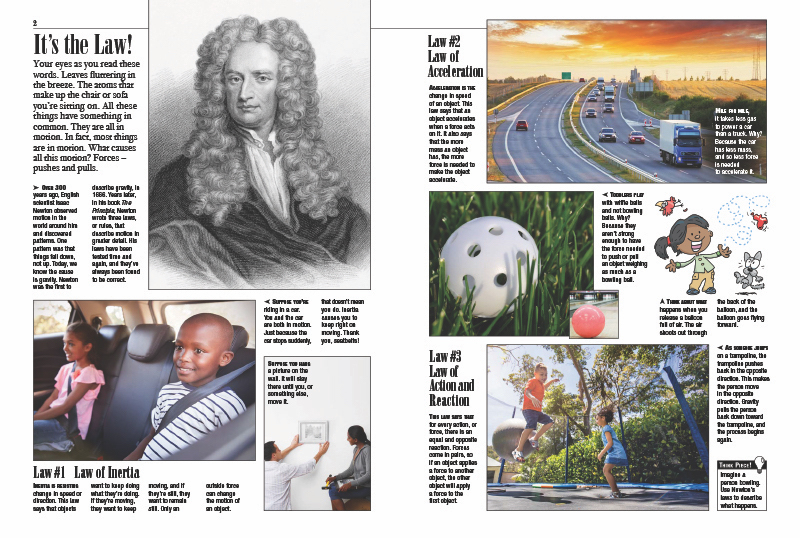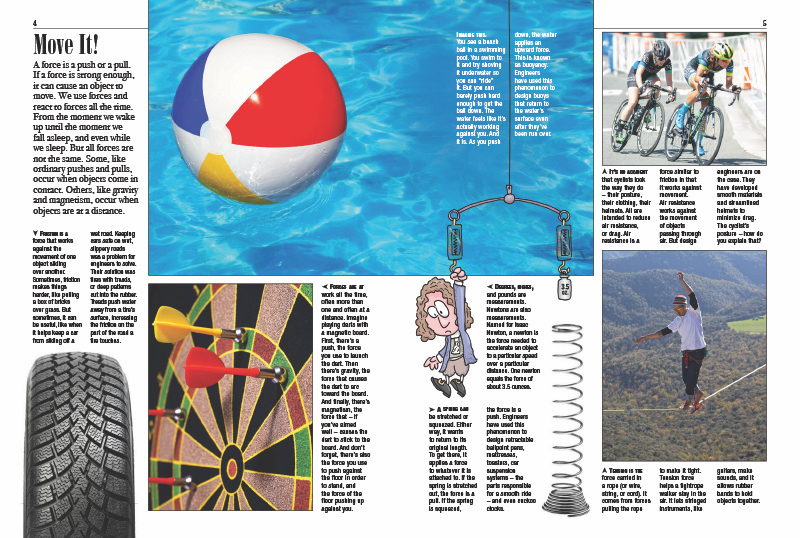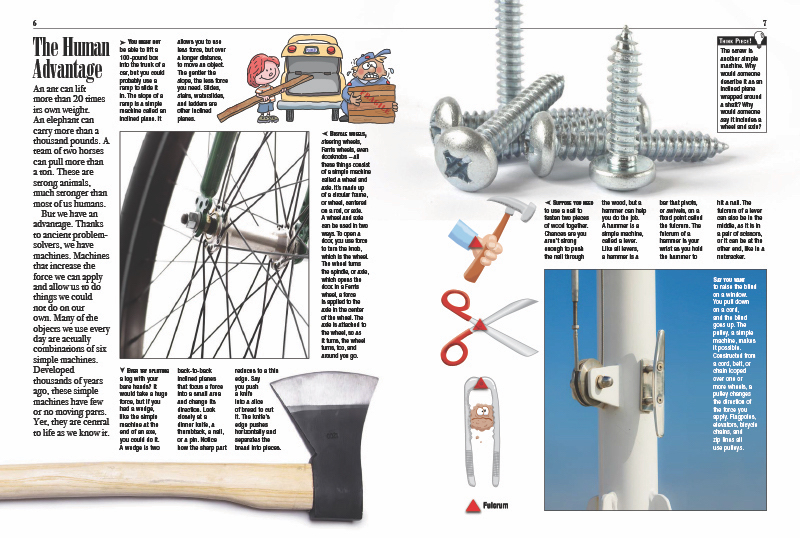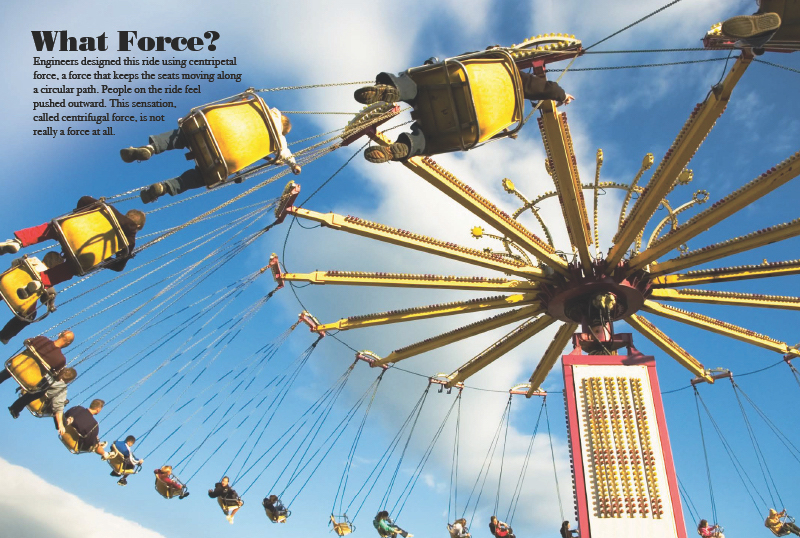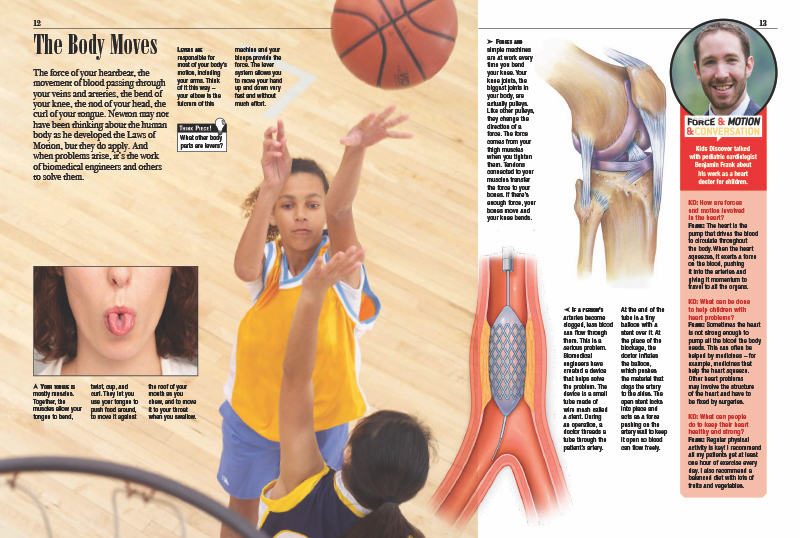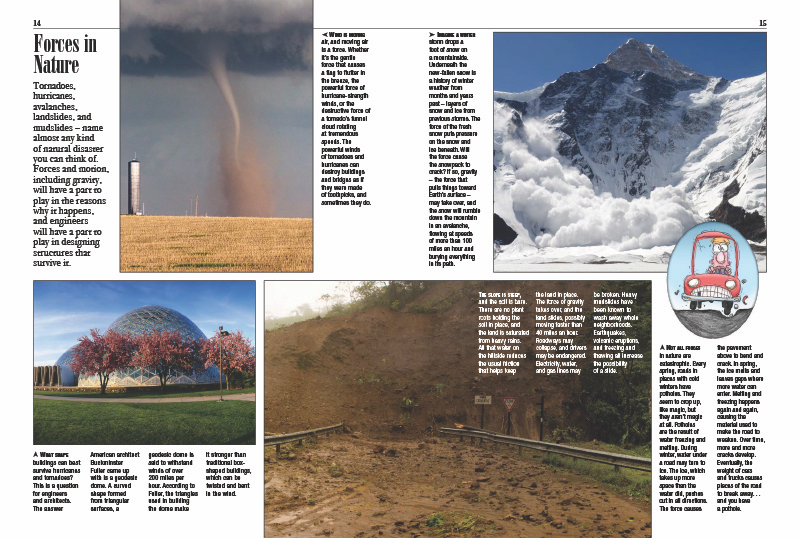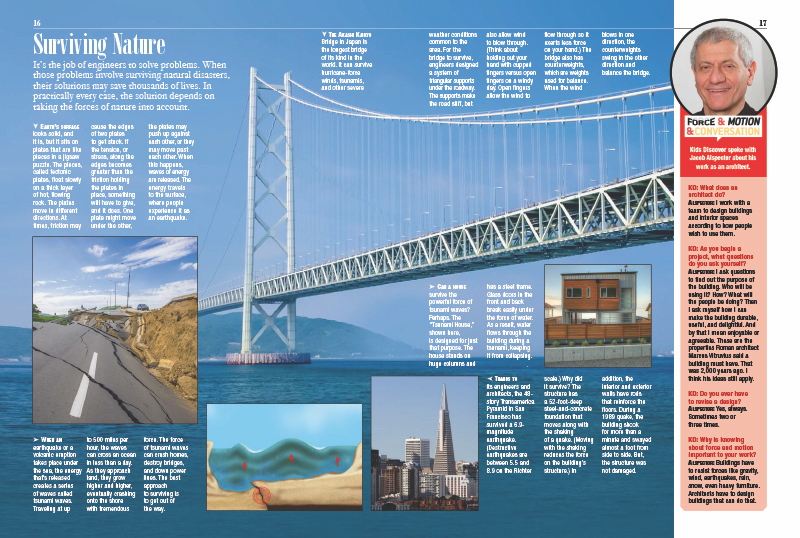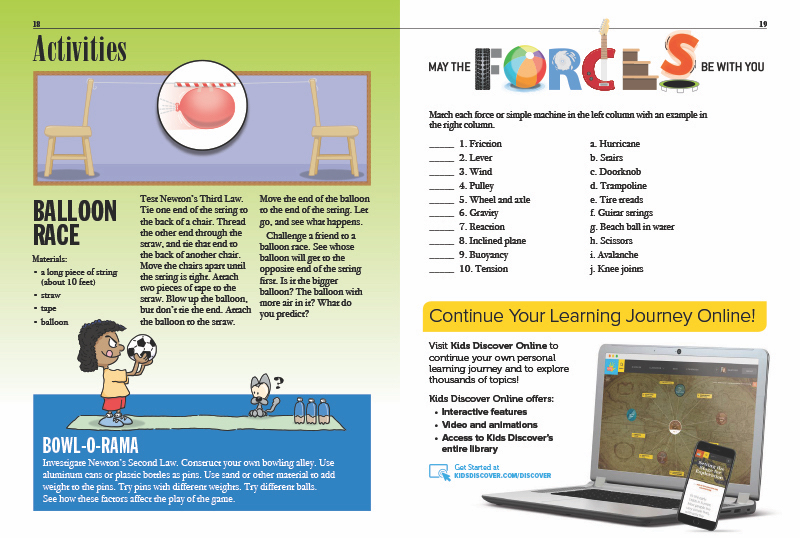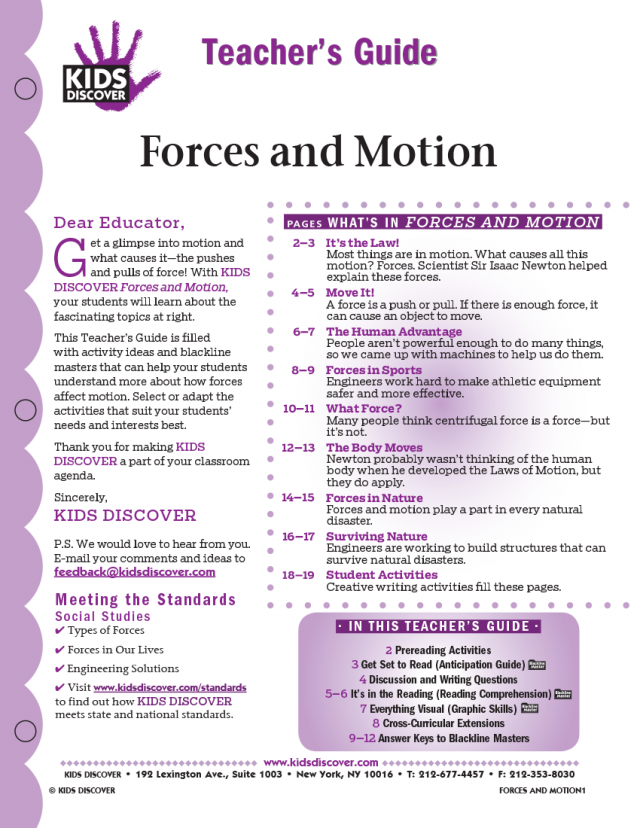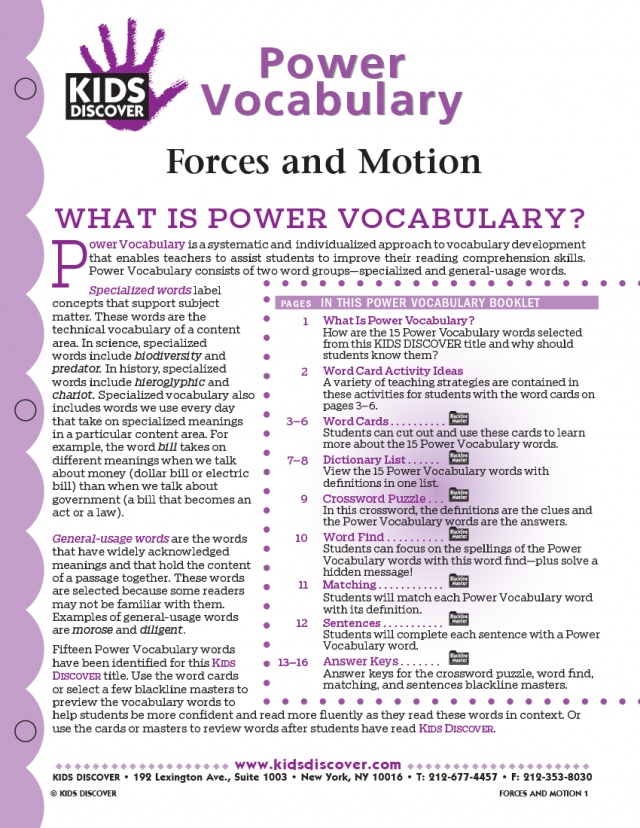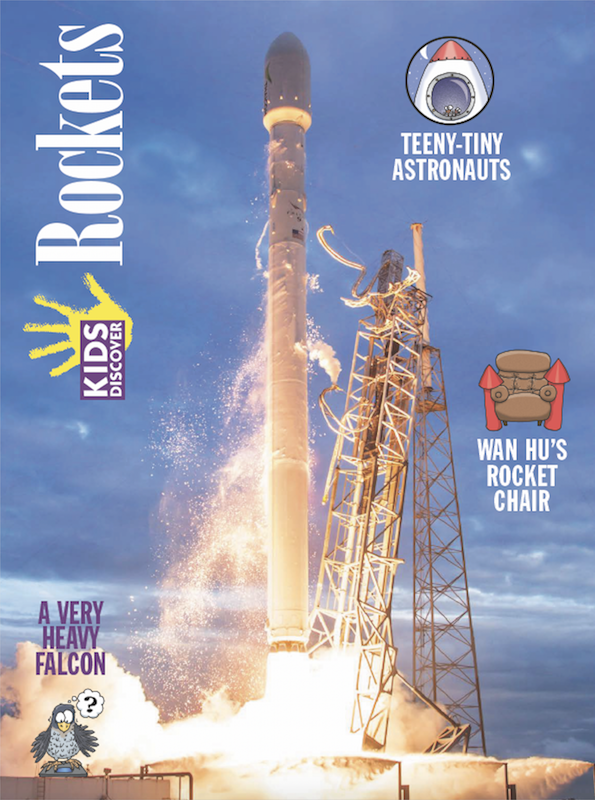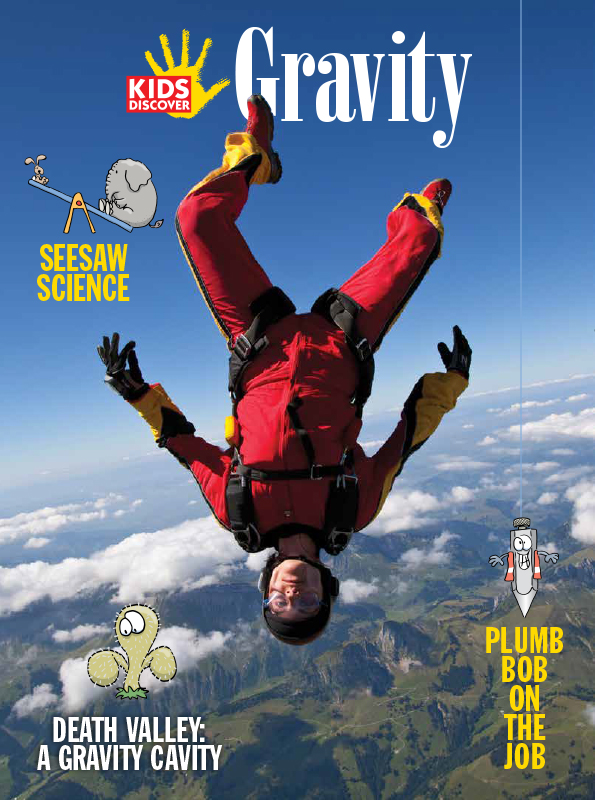Get digital access to this title and hundreds more with a Kids Discover Online subscription.
Get digital access to this title and hundreds more with a Kids Discover Online subscription.
Force and Motion
Things don’t move on their own. (At least not in the real world.) It takes effort, like a push or a pull, to make things move. These are the forces that create motion and that engineers have used to solve problems for centuries. To find out more, hop aboard a train with stops that explore how these forces affect our lives, our body, and our world. First stop is Isaac Newton, who articulated three laws of motion that describe just about everything. Like the movement of a trampoline. The acceleration of a car. The action of a spring. Next stop is simple machines, those engineered inventions that multiply the force a human is capable of.
Kids interested in sports will want to dive into the facts about how force and motion are connected to football, soccer…..and concussions. This train even stops to explore force and motion at work in the human body, including the heart, the tongue, and the knee. No trip is complete, however, without stopping to examine forces in nature — hurricanes, tornadoes, tsunamis, earthquakes, avalanches — and the endeavors that enable us to survive them through engineering and architecture. Kids will read about a building in San Francisco that’s already survived a 6.9 magnitude earthquake. They’ll discover a bridge in Japan and a house off the coast of Washington, both engineered to withstand tsunamis. And along the way, kids get the inside scoop from a physical therapist, a heart doctor for children, and an architect.

